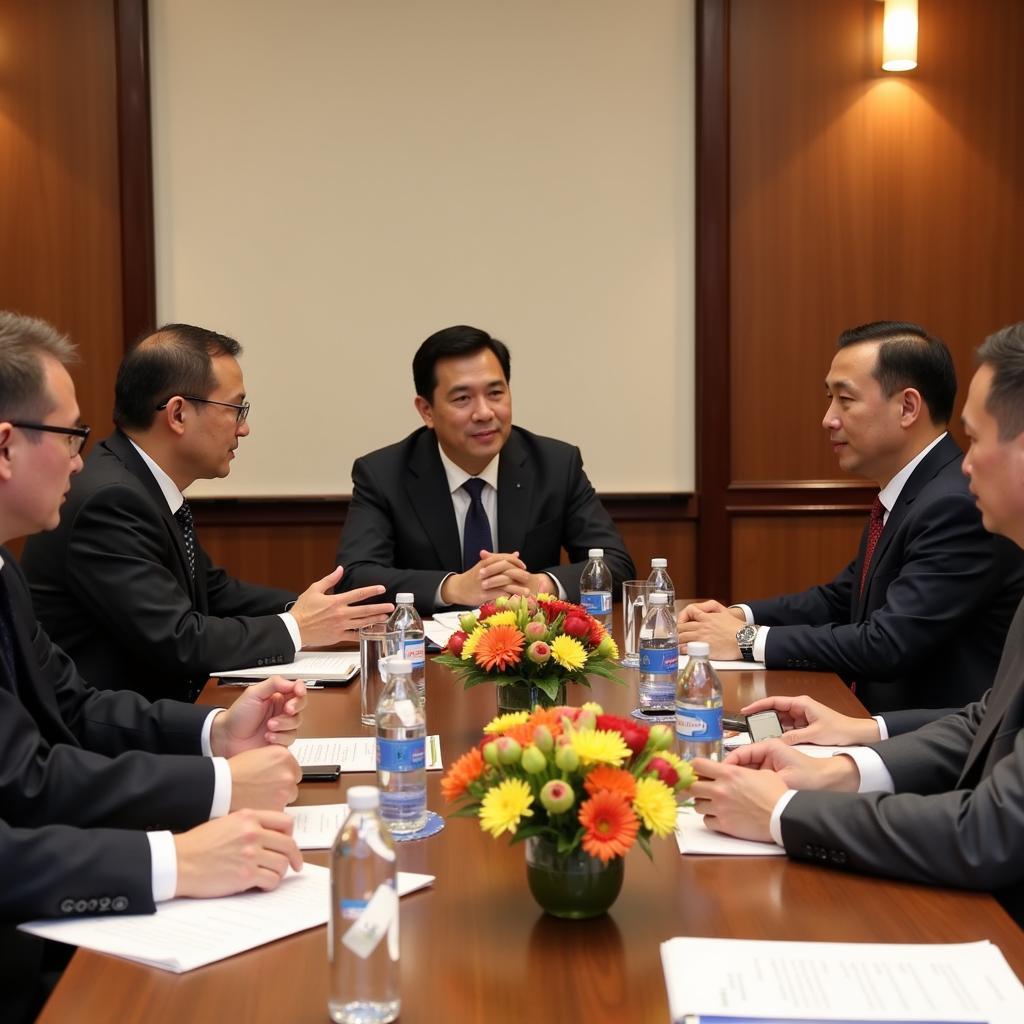The 51st Asean Ministerial Meeting (AMM) marked a significant milestone in the journey of Southeast Asian cooperation. Held in Singapore in 2018, this pivotal meeting brought together foreign ministers from the ten member states to discuss critical regional and international issues, shaping the future trajectory of ASEAN. The AMM serves as a vital platform for dialogue and collaboration, reinforcing ASEAN’s centrality in the evolving geopolitical landscape.
Key Outcomes of the 51st ASEAN Ministerial Meeting
The 51st AMM addressed a wide array of crucial topics, including the South China Sea, the Rohingya crisis, cybersecurity, and economic cooperation. Several key outcomes emerged from the meeting, reflecting ASEAN’s commitment to regional stability and prosperity. The ministers reiterated the importance of maintaining peace and stability in the South China Sea, emphasizing the need for a Code of Conduct. Significant progress was made on economic integration, with discussions focusing on the Regional Comprehensive Economic Partnership (RCEP). Furthermore, the meeting highlighted the importance of strengthening ASEAN’s cooperation with its dialogue partners. The AMM underscored the organization’s commitment to multilateralism. asean and multilateralism This commitment plays a crucial role in navigating the complexities of global politics.
Focus on Regional Security at the 51st AMM
Regional security remained a top priority at the 51st AMM. The ministers expressed concerns over escalating tensions in the South China Sea and reaffirmed the importance of peaceful dispute resolution. They also discussed strategies to combat terrorism and transnational crime, emphasizing the need for enhanced intelligence sharing and cooperation. The meeting recognized the significance of cybersecurity in the digital age and called for greater collaboration in addressing cyber threats. These discussions demonstrated ASEAN’s proactive approach to safeguarding regional stability.
Economic Cooperation and Integration: A Core Agenda
Economic cooperation and integration formed a core agenda of the 51st ASEAN Ministerial Meeting. The ministers reviewed the progress of the ASEAN Economic Community (AEC) and discussed ways to further enhance regional economic integration. The RCEP negotiations were a key focus, with the ministers reaffirming their commitment to concluding a comprehensive and high-quality agreement. They also explored opportunities for greater cooperation in areas such as infrastructure development, digital economy, and sustainable development. The 51st ASEAN Ministerial Meeting paved the way for enhanced economic collaboration within the region. The asean 5 region played a significant role in these discussions, demonstrating their leadership in economic development.
 ASEAN Economic Ministers Meeting in 2018
ASEAN Economic Ministers Meeting in 2018
ASEAN’s Engagement with Dialogue Partners
The 51st AMM provided an opportunity for ASEAN to engage with its dialogue partners. Meetings were held with representatives from countries such as China, Japan, the United States, and the European Union. Discussions focused on strengthening cooperation in various areas, including trade, investment, security, and people-to-people exchanges. These interactions underscored ASEAN’s commitment to maintaining open and constructive relationships with the international community. The 51st asean ministerial meeting 2018 highlighted the importance of these partnerships in promoting regional peace and prosperity.
What were the key challenges discussed at the 51st AMM?
The ministers acknowledged several key challenges facing the region, including the Rohingya crisis, the South China Sea disputes, and the rise of protectionism. They emphasized the need for a coordinated and comprehensive approach to address these challenges.
How did the 51st AMM contribute to ASEAN’s overall goals?
The 51st AMM reaffirmed ASEAN’s commitment to its core principles of community building, regional integration, and peaceful dispute resolution. The meeting’s outcomes contributed to strengthening ASEAN’s centrality and its role in shaping the regional architecture.
 ASEAN Dialogue Partners Meeting
ASEAN Dialogue Partners Meeting
Conclusion: A Stepping Stone for a Stronger ASEAN
The 51st ASEAN Ministerial Meeting served as a crucial platform for dialogue and cooperation, addressing pressing regional and international issues. The meeting’s outcomes reinforced ASEAN’s commitment to regional stability, economic integration, and multilateralism. The 51st AMM demonstrated ASEAN’s ability to navigate complex geopolitical challenges and work towards a shared vision of peace and prosperity.
FAQs
- Where was the 51st ASEAN Ministerial Meeting held? (Singapore)
- What is the main purpose of the ASEAN Ministerial Meeting? (To discuss regional and international issues and promote cooperation among ASEAN member states)
- What were some of the key topics discussed at the 51st AMM? (South China Sea, Rohingya crisis, cybersecurity, economic cooperation)
- Who participated in the 51st ASEAN Ministerial Meeting? (Foreign ministers from the ten ASEAN member states and representatives from dialogue partner countries)
- What is the significance of the 51st AMM? (It reaffirmed ASEAN’s commitment to regional stability and cooperation)
- What is asea ope? (This link likely contains information relevant to ASEAN’s economic cooperation initiatives, adding further context to the discussions held during the meeting).
- How does the AMM contribute to ASEAN’s overall goals? (It provides a platform for member states to align their policies and work towards common objectives).
You might also be interested in reading about previous ASEAN summits and ministerial meetings. Explore our website for more insights into ASEAN affairs.
For further assistance, please contact us at Phone: 0369020373, Email: aseanmediadirectory@gmail.com, or visit our office at Thon Ngoc Lien, Hiep Hoa, Bac Giang, Vietnam. We offer 24/7 customer support.
